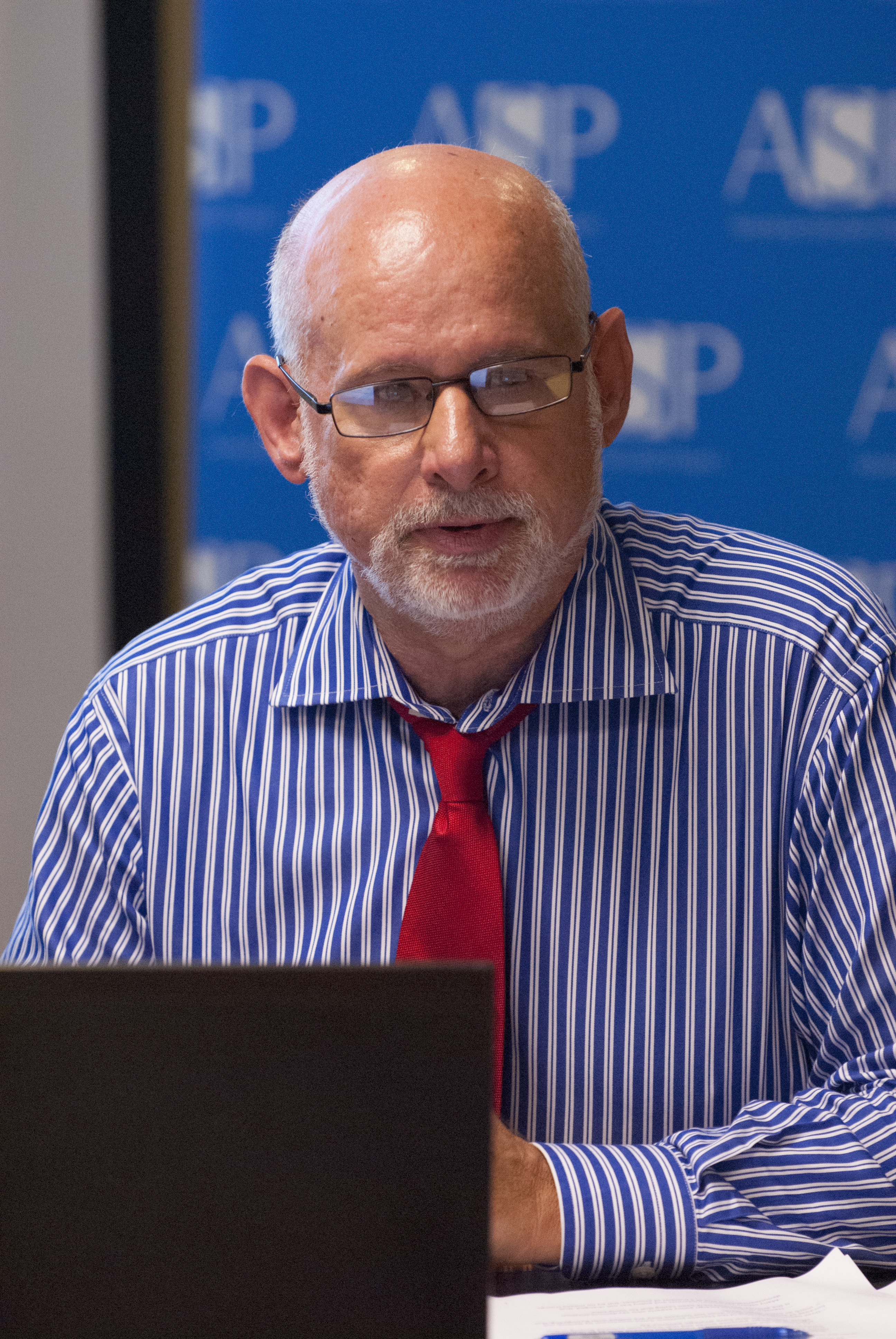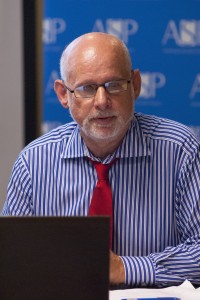
Event Recap: Joel Wit and North Korean Satellite Imagery Analysis
Podcast: Play in new window | Download
Subscribe: Apple Podcasts | RSS
This afternoon, Joel Wit, of 38 North, gave a unique talk about North Korea’s current nuclear and missile programs and possible American responses to them utilizing satellite imagery. Mr. Wit is considered to be one of the premier North Korean experts in the U.S. and began his career at the State Department during the Cold War conducting similar satellite imagery studies of Soviet weapons programs.
Mr. Wit made a number of points and observations as he worked through an imagery study of North Korea’s probable nuclear testing site, its 5 megawatt and light water reactor sites, and its missile test facilities, some of which can be found here.
 In regards to the nuclear testing facility at Punggye-ri that North Korea may have used for the 2013 test and used in its 2009 test, Mr. Wit had a number of things to say about recent activity at the site including its possible expansion and possible indicators to watch for prior to a nuclear test.
In regards to the nuclear testing facility at Punggye-ri that North Korea may have used for the 2013 test and used in its 2009 test, Mr. Wit had a number of things to say about recent activity at the site including its possible expansion and possible indicators to watch for prior to a nuclear test.
There was no notable recent work on a possible expansion of the site prior to January of this year. Since April, however, large amounts of activity have been observed at this site including large amounts of digging and other earthmoving activities. These seem to indicate both the possibility of maintenance and upgrades to the pre-existing tunnel facility and the construction of a new tunnel into the side of a neighboring mountain. This digging into the mountain appears to be a long term project as satellite imagery seems to show bedrock from the interior of the mountain being removed.
These tunnels are critical as they provide the North Korean regime with a relatively safe way to carry out their nuclear tests without exposing their country to fallout.
There has also been visible activity of the surrounding forest being cleared away in possible preparation for future building.
All of this new construction has been occurring despite the diplomatic efforts by China, sanctions, and a recent North Korean peace overture indicating that North Korea may not be terribly deterred from pursuing its nuclear program.
Mr. Wit pointed out that the US is not currently aware of what to look for in its satellite imagery as during the Cold War for indications that a nuclear test may soon occur. However, one possible indicator that Mr. Wit has observed is the appearance of a satellite communications dish prior to the test but this dish disappears during and after the test.
In regards to North Korea’s restarting of its 5 megawatt reactor and bringing its new light water reactor on line Mr. Wit made it clear that it appears that North Korea had a plan to quickly restart its 5-megawatt plutonium reactor after having previously destroyed a critical component of its water cooling system. As proof of this he pointed to the fact North Korea had very quickly constructed a new water cooling system for its light water reactor and in such a way to allow for the 5 megawatt reactor to be very quickly linked into the same system.
It is unknown when or if either of these reactors are already operational, though this will be a function of how quickly fuel for either of them can be prepared.
Finally, in regards to North Korea’s missile programs Mr. Wit pointed out that imagery indicates that it is currently building new facilities at its long range testing facility. This construction would seem to be consistent with the facilities that would be needed for testing missiles that would be 3 to 4 times larger than most of North Korea’s current models.
Mr. Wit went on to outline a number of his opinions of current U.S. policy on North Korea and its nuclear program in regards to his analysis of the imagery data. Put succinctly; the U.S. must begin to consider how to engage North Korea in addition to simply putting pressure on it, lest the rest of the world acquiesce to North Korea’s new status as a nuclear state.
Click Below to Listen to the Event Audio:
Christopher Smith is a PhD student at the University of Arizona’s Department of Chemistry and Biochemistry with a focus on Analytical Chemistry.






[…] can read the report and listen to the audio of this event here The American Security Project (ASP) cordially invites you to a lunchtime […]
[…] Event Recap: Joel Wit and North Korean Satellite Imagery Analysis […]
[…] about American policy in regards to these programs. Previously, I wrote about Mr. Wit’s conclusions regarding his imagery analysis of North Korean nuclear and missile facilities including its testing […]
[…] summaries on the imagery analysis and Mr. Wit’s policy observations can be found on the American Security Project […]
[…] summaries on the imagery analysis and Mr. Wit’s policy observations can be found on the American Security Project […]